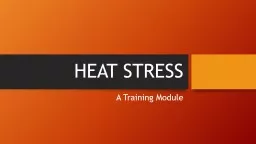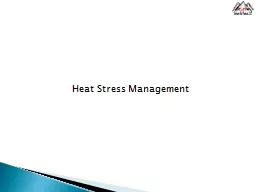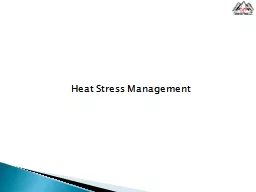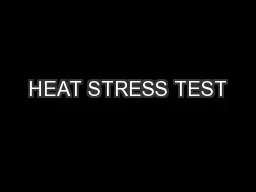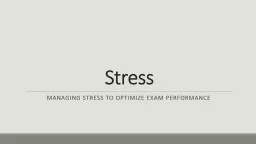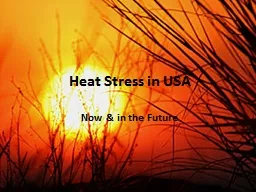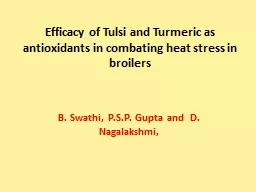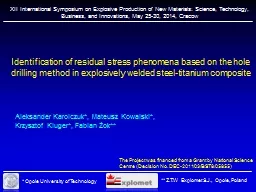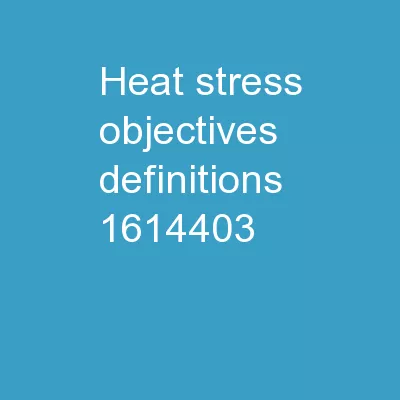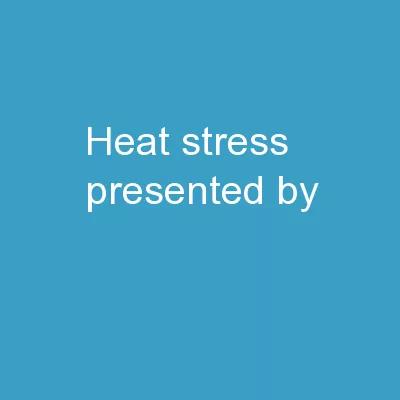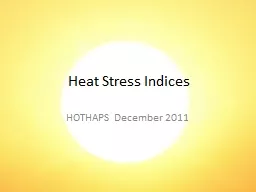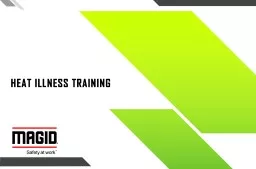PPT-HEAT STRESS A Training Module
Author : fanny | Published Date : 2022-05-18
WHAT IS HEAT STRESS Heat Stress A situation where too much heat is absorbed by a person a plant or an animal and causes stress illness or even death It can
Presentation Embed Code
Download Presentation
Download Presentation The PPT/PDF document "HEAT STRESS A Training Module" is the property of its rightful owner. Permission is granted to download and print the materials on this website for personal, non-commercial use only, and to display it on your personal computer provided you do not modify the materials and that you retain all copyright notices contained in the materials. By downloading content from our website, you accept the terms of this agreement.
HEAT STRESS A Training Module: Transcript
Download Rules Of Document
"HEAT STRESS A Training Module"The content belongs to its owner. You may download and print it for personal use, without modification, and keep all copyright notices. By downloading, you agree to these terms.
Related Documents

